Managing project risk is a critical task for any project manager regardless in agile or traditional project management. Project risk management requires identifying, collating and addressing the risks that can impact the project. This is a continuous process throughout the project lifecycle. We have wrote a range of articles of risk management for you tp deep dive on.
When handling any project, it is crucial to understand that several risks are involved, whether expected or not. In order to safeguard and prepare your projects for success, you need to plan on the risks and threats and determine how to handle them if and when they occur.
The risk process in project management can be applied to any project or product. It helps identify and create appropriate risk responses for the most critical risks.
Risk Management in Project Management
Risk management is how individuals identify, analyze risks, and respond to risks during the project cycle. This process makes it easy to monitor the project, focus, and achieve the set goals.
Risk management should be part of the planning process for a team to attain excellence in project management. In such a case, it becomes easy to deal with risk if it occurs.
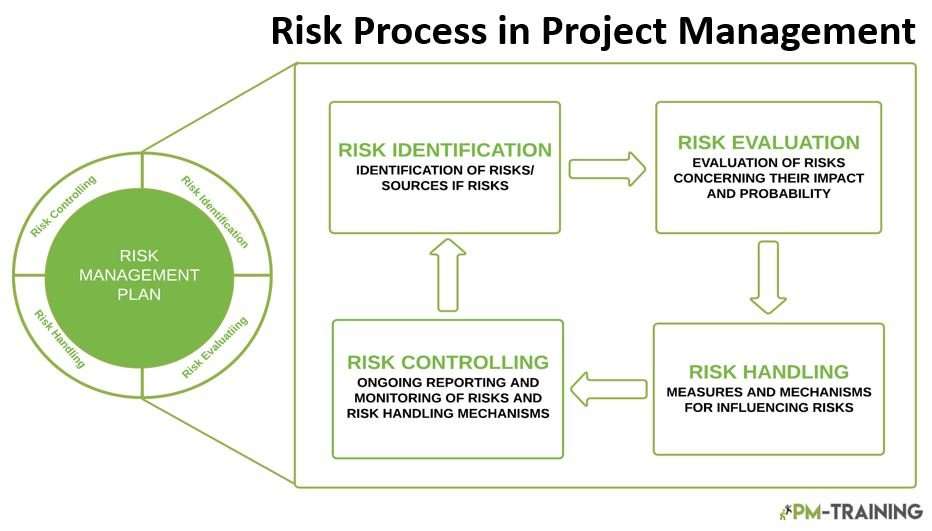
Controlling risks in project management requires a plan. The plan follows a process that will help individuals turn the demerits into advantages. The following are steps to follow in the process.
a. Identifying Probable Risks
The initial step in risk management is to compile a list of events that may jeopardize the project. Risks may occur very early in a project. As a member or leader of a project, it is vital to point out a threat as early as possible to mitigate damage.
b. Analyze the Risk
Analyzing the risk may be a time-consuming process due to its complexity. You should use a risk assessment matrix which is an expanded risk register. Investing in project management software will assist you in analyzing the risk in your project. There are two ways to analyze risk, qualitative and quantitative methods. It is through analysis that you can know how to deal with the impact. Tornado diagrams are a great tool to help visualize risks.

c. Prioritizing Risk
Risks are different and have different impacts. Therefore, it is essential to categorize the threats to know what resources you will use for each. Threats can be low, high, or medium.
When you see where the risk lies, you will learn how to act accordingly. Some threats are dangerous and could paralyze your project, and you will need to move with speed. Categorizing risks will help you put your budget and schedule in order.
d. Assigning the Risk to an Owner
Identify the person behind the occurrence of that risk. Afterwards, plan to start resolving it and during this process also identify a skilled or more suitable person to resolve the problem. The failure to identify and assign risk for people pre-disposes you to more risk.
e. Monitoring
When your project begins, continuously track it to ensure that you attain your objectives. Monitoring ensures that risks do not catch you by surprise. Monitor the project by updating the project status.
Keep up with the risk managers to ensure that the flow of events is seamless. Ensure that the register is updated and that there is openness and team collaboration.
f. Respond to Risk
When a risk becomes a reality, it is time to act. Use the risk management plan and risk register as tools to help you deal with the threat. If possible, prevent the risk before its occurrence.

Agile Risk Management
Agile Risk Examples
We hand crafted 8 Common Risks in Agile Management & How to Prevent Them. We a created a list of common schedule risks in software development based on work originally done by Boehm and Jones.
Risk Categories
Risk overlap from project to project so we have created a list of 27 risk categories for Agile project managers to use. It is a list of common schedule risks in software development based on work originally done by Boehm and Jones. He proposed that the projects risk can be reduced by directly addressing these common risks:
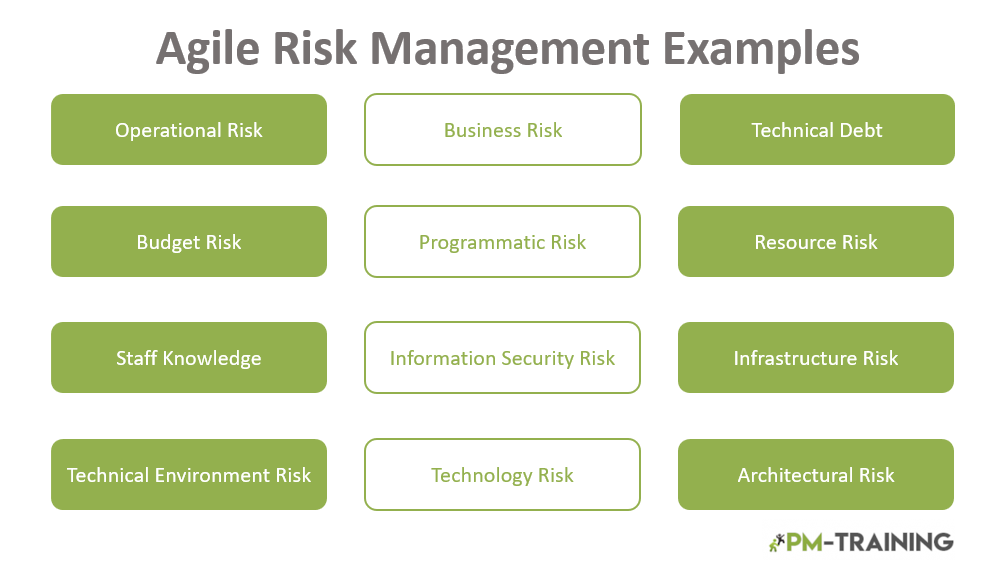
Project Risk Management Concepts
Quantitative Risk Analysis
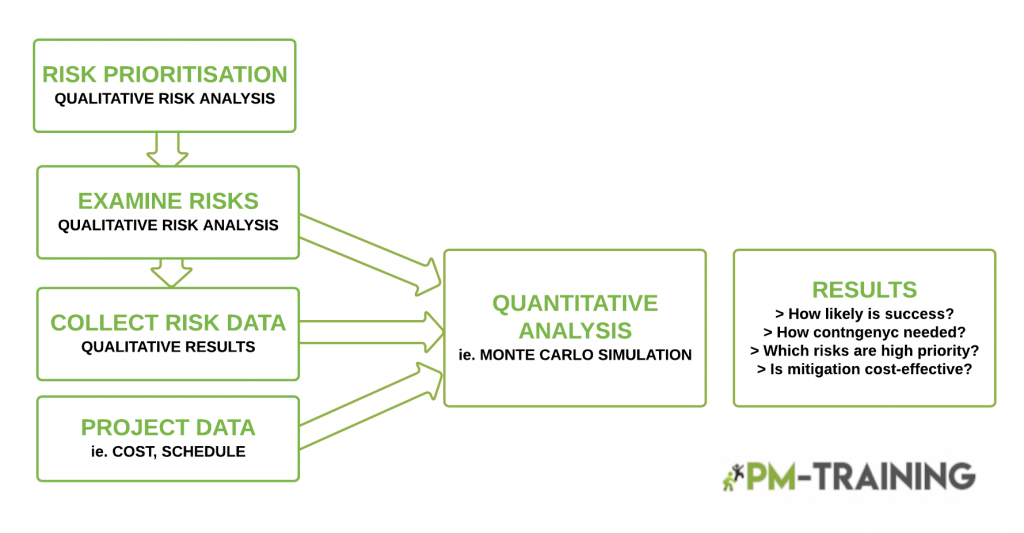
Quantitative risk analysis assists (QRA) in identifying factors impacting individual projects or organizations by applying research methodologies with the purpose of measuring and projecting future conditions. Read more on Quantitative Risk Analysis here.
Risk Responses in Project Management
Project managers and leaders utilize best practices in risk management in similar ways that they would in any other project. (i.e., marketing, sales, development, operations). In software development, there are four best practices to implement when it comes to completing a project:
- Avoid Risk
- Reduce or Mitigate Risk
- Transfer Risk
- Accept Risk
Risk Analysis
Risk analysis is part of the risk management process. Through risk analysis, a firm can calculate the potential of a threat. The two ways to analyze risk are qualitative and quantitative analysis.
Qualitative Risk Analysis
Qualitative risk analysis is the intense study of a firm’s value based on non-numeral information such as management, labor relations, and expertise (PMBOK®, 6th edition, ch. 11.3.3). Leaders and experts use data and expertise from previous projects to estimate the probability and impact of each risk.
Quantitative Risk Analysis
Quantitative risk analysis is the basis of decision-making in matters of controlling risks (PMBOK®, 6th edition, ch. 11.4). It reduces the level of uncertainty as it calculates the possible outcomes for each project and objective. Quantitative risk analysis helps the project manager to come up with budgets, targets, and work schedules.
The impact scale measures the effect of the risk, and it ranges from one to five. Five being maximum impact. For probability, the scale ranks from one to ten. The higher the number, the higher the likelihood of risk. These two scales make it possible to categorize the risk.
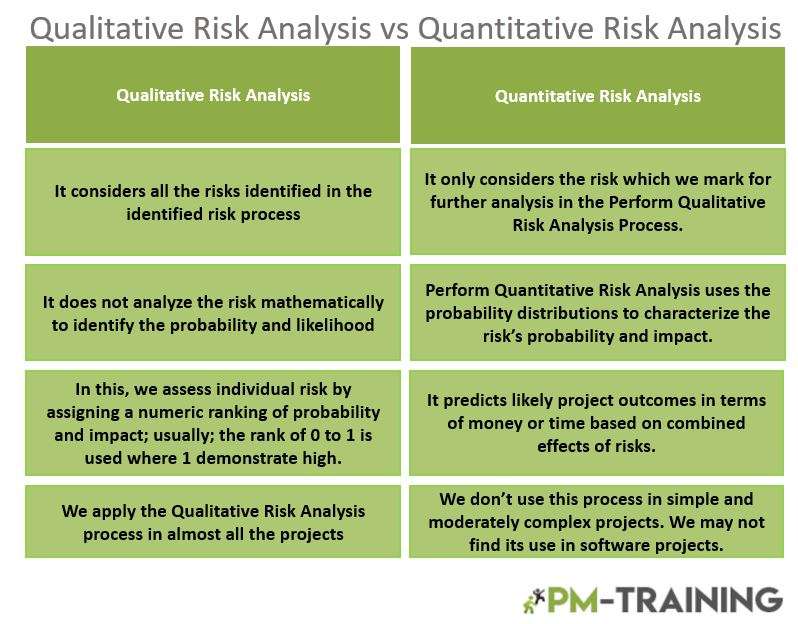
Understanding Risk Exposure
The success of a project is highly dependent on the ability of the management team to avoid or control exposure to risk. Implementing effective strategies towards the minimizing or eliminating exposure to risk can lead to elimination of unwanted expenses and business continuity. Read more on risk exposure here.
Residual Risk Explained
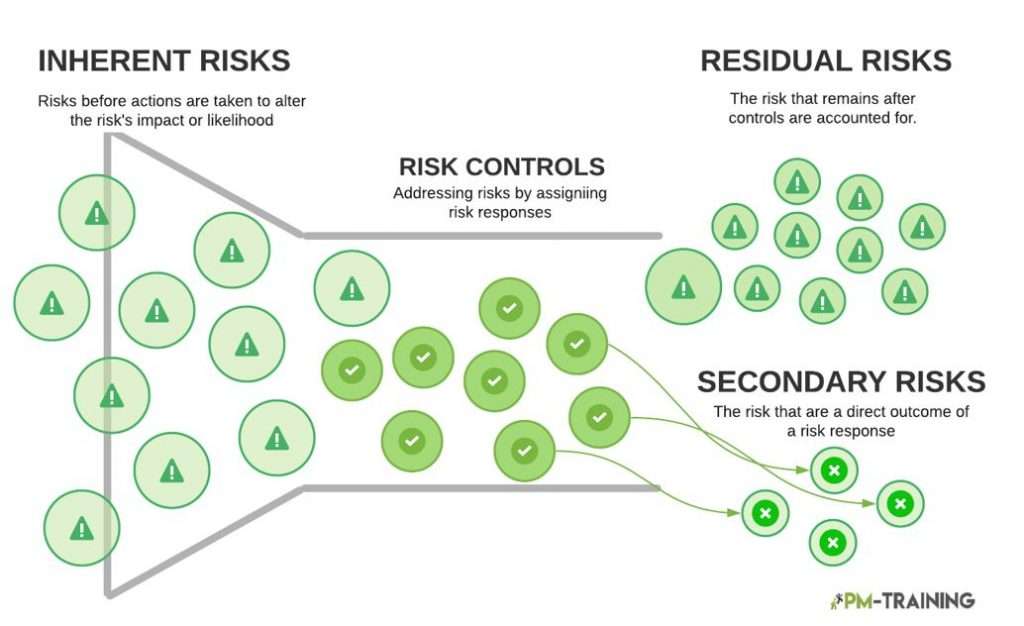
As a project manager, the first task at hand is to deliver the anticipated and promised results while identifying and mitigating risks that could potentially derail those results from rendering successfully. Residual risk can easily be over looked but can have huge knock on effects to a project. Residual Risk Explained here.
